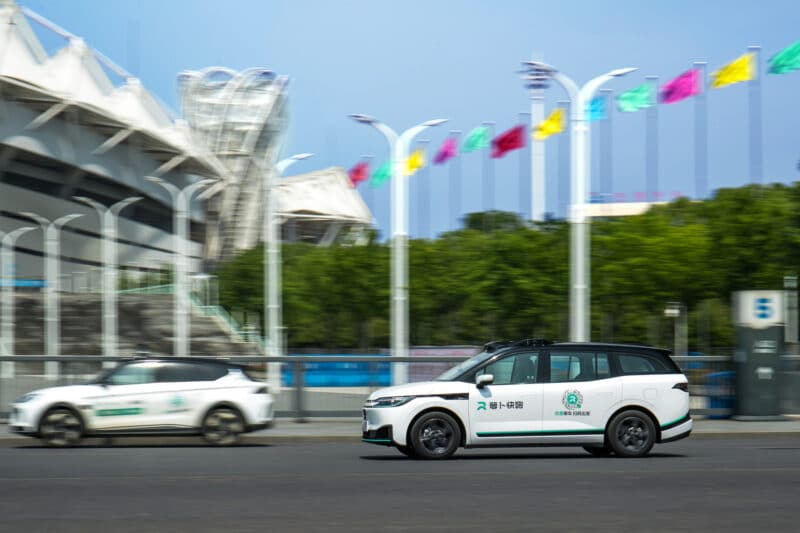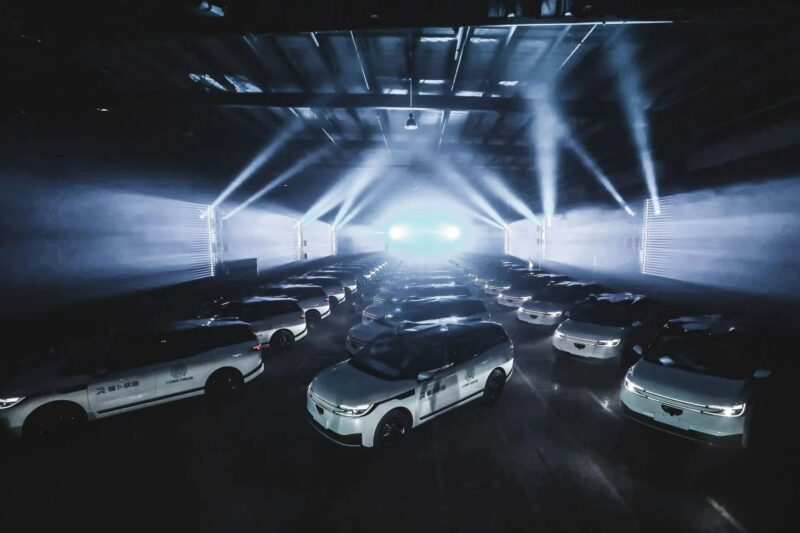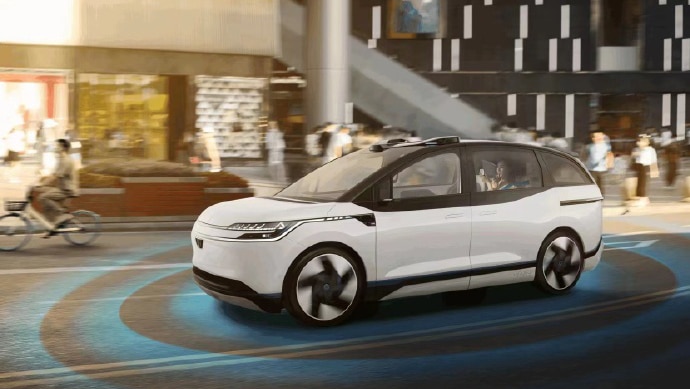Baidu launches 6th generation robotaxi – costs less than a Xiaomi SU7
Today Baidu launched at the company’s Apollo Day its sixth generation robotaxi which is now ready for deployment on the streets of Wuhan. What’s really eye catching about the announcement is how little the new RT6 costs. According to Baidu the invoice cost is just 204,600 yuan (28,350 USD) they even showed the Chinese fapiao at the launch to prove it. That comes in at less than recently launched cars such as the Xiaomi SU7 and IM L6 and is more than 50% less than the cost of the previous generation of robotaxi – RT6 stands for sixth generation robotaxi
If you’re wondering what the big deal is about that price you need to realize this is a level 4 autonomous driving car. It comes equipped with 5 Lidar units and has in total 40 sensors in 7 categories around the car. Maximum sensing distance is 440 meters. Computing power is 1200 TOPS which is more than double the computing power used by XPeng and Li Auto for their assisted driving systems, but is only marginally more than the 1016 TOPS of the Nio Adam supercomputer.



The RT6 is produced by JMC (Jiangling Motors Corp). Jiangxi Province based JMC is best known for commercial vehicles and also has a joint venture with Ford producing vehicles such as the Transit, Equator and Bronco. Supposedly combining elements of both an MPV and SUV the RT6 measures in at 4765, 1885 and 1715 mm (l/w/h) and rides on a 2830 mm wheelbase. It’s powered by a 110 kW electric motor sourced from BYD. Batteries are lithium iron phosphate and are in a swappable pack which can be changed in three minutes, the size of the pack is not currently disclosed. Maximum speed is 135 km/h.
The RT6 has sliding doors to ease ingress and egress for passengers and doors are unlocked using a password on the B-pillar. In keeping with many current Chinese SUVs the roof and pillars are black but surprisingly this also extends all the way down the tailgate until the bumpers. At the front the RT6 has Starlight headlights which have recognition, prompting and interaction functions. On the roof are an array of Lidar sensors covering various angles.
Inside, the car is a four seater. Despite some Chinese media such as Fast Technology showing pictures of the RT6 with a retractable steering wheel for the moment this is still some way off. The front, though, does just have a very simple steering wheel and a small central display setup. Emphasis is very much on the two rear passengers who get individual seats which have heating and a 10-point massage function along with an adjustable back rest and leg rest. The second-row passengers have 998 mm of headroom, 1,485 mm of shoulder room and 920 mm of legroom and the seats can recline by 135°. Passengers are able to control the car’s comfort functions by voice command. Safety is aided by both side and curtain airbags for the passengers.


Plans call for 1,000 RT6 robotaxis to deploy on the streets of Wuhan by the end of 2024. Apollo Go the Baidu unit which operates the robotaxi fleet is rapidly approaching profitability through a combination of decreasing costs and increasing orders and the unit expects to achieve breakeven by the end of the year and go into the black next year.
The company has developed a fully autonomous robotaxi ecosystem in Wuhan meaning it’s capable of managing the entire operation, including vehicle activation, dispatch, battery swapping, cleaning control, and retrieval, all without human intervention.

Modeling of the software system for driving the RT6 is evolving from a regulation and decision-making module of the original system to a new AI data-driven system. This supposedly learns from experienced human drivers to create a system that will surpass them. On the RT6 Baidu Apollo has introduced Apollo ADFM, the world’s first foundation model capable of supporting Level 4 autonomous driving. Using depth, accuracy and information richness it maximizes the depiction of obstacles in the environment.
The system builds on Apollo’s 100 million kilometers or real-world operation date. Over the last two years the Apollo robotaxi fleet has had only 1/14 the accident rate of human drivers. Various systems in the RT6 aim to build on this safety record.
Currently the Apollo Go service area covers 3000 square kilometers across Wuhan and has a catchment population of 7.7 million people, covering over half the city’s population.
Sources: Baidu, Fast Technology, Autohome



